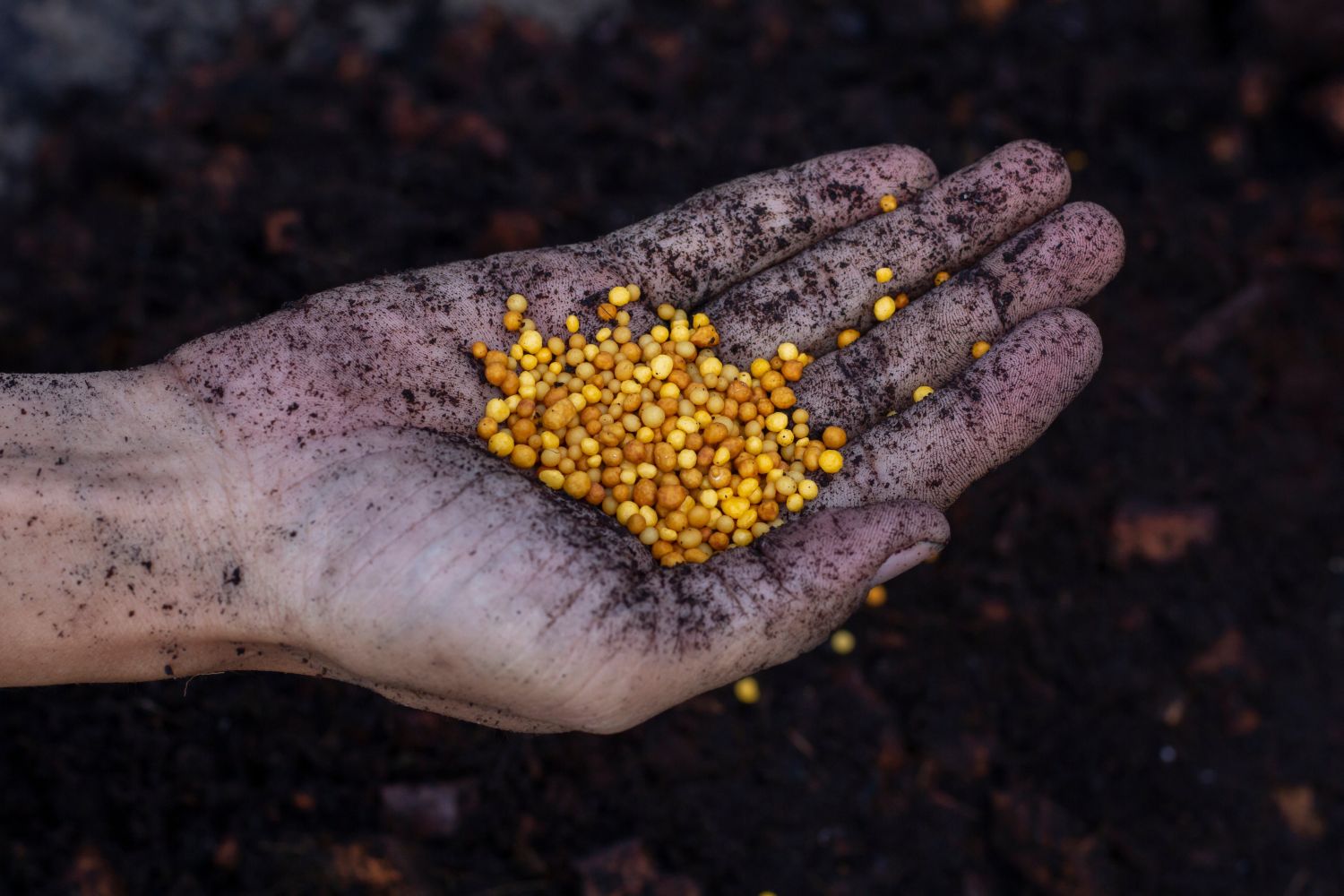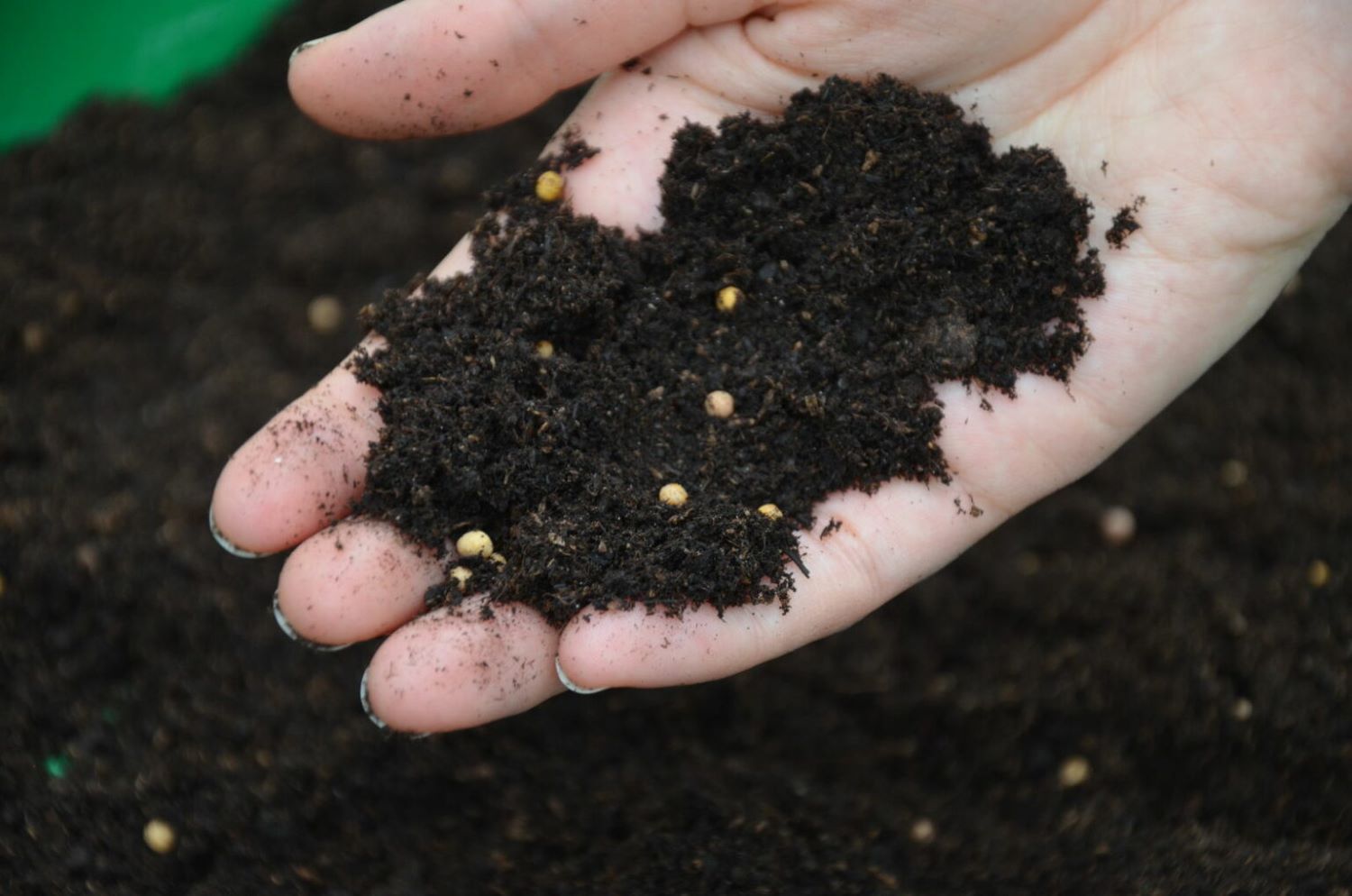Have you ever noticed some strange small yellow balls mixed in the soil of your garden or houseplants? If so, you’re definitely not alone Many gardeners and plant owners often find these odd little spheres in their potting mix and wonder about their identity and purpose. Well, wonder no more! This article will explain everything you need to know about those puzzling yellow balls that sometimes appear in soil
What Are the Small Yellow Balls?
The small yellow balls found in soil are usually a type of coated fertilizer called polymer-coated or controlled-release fertilizer. The most common type is made of urea formaldehyde which is a nitrogen fertilizer. They also contain other key nutrients plants need like phosphorus and potassium.
The fertilizer granules are covered with a special polymer resin coating that controls the release of the nutrients inside. This coating allows the fertilizer to break down slowly over an extended period providing a continuous feed to plants for up to 3-4 months. The slow-release mechanism of polymer-coated fertilizers makes them very convenient, eliminating the need to frequently reapply fertilizer.
These types of fertilizers go by various brand names like Osmocote, Nutricote, and Polyon. The balls come in sizes ranging from 1 to 4 mm in diameter on average. Their color varies from bright yellow to orange, brown, or even greenish depending on the specific formula.
Why Are the Balls in the Soil?
If you did not put any fertilizer in your soil, the most likely source of the yellow balls is the commercial potting mix or soil that your plants originally came in. Many mass-produced potting mixes and bagged potting soils contain coated fertilizer pellets as a standard ingredient to feed plants.
Nurseries and greenhouses commonly mix slow-release fertilizers into their potting media to provide nutrients to plants during propagation and growth phases. This saves labor compared to having to frequently fertilize each container. When you bring a new plant home, the leftover fertilizer balls are simply residual from the nursery soil.
The balls may also have been intentionally added to the potting mix by a gardening friend or relative who gifted you a repotted plant. In most cases, finding these spheres in your soil is perfectly normal and not a cause for concern.
Are the Balls Harmful?
The good news is the fertilizer balls are totally harmless to plants. The polymer coating prevents too many nutrients from being released at once, making fertilizer burn nearly impossible. As the balls gradually break down, they steadily supply appropriate amounts of nitrogen, phosphorus, potassium, and other nutrients most plants need to thrive.
In fact, the presence of the balls indicates your plants have a ready source of food available right in the soil. The fertilizer is also safe for people and pets who may touch the soil. The hard resin shell prevents the dust and chemicals inside from escaping. An added benefit is the balls naturally fade away on their own over time without leaving any mess behind.
Caring for Plants With Fertilizer Balls
Caring for plants that have fertilizer balls mixed into the soil requires minimal effort. Here are a few tips:
-
Don’t add more fertilizer – The existing balls provide all the nutrients needed for several months. Extra fertilizer risks overfeeding and burning plants.
-
Water normally – Continue your regular watering schedule as the balls don’t alter plants’ moisture needs. They will slowly release nutrients with each watering.
-
Re-pot after a few months – Once the fertilizer depletes after 3-4 months, re-pot plants with fresh soil and a new dose of fertilizer balls to keep getting nutrients.
-
Mix in old balls – When re-potting, incorporate any remaining intact fertilizer balls into the new potting mix so they can continue releasing nutrients.
Identifying Polymer-Coated Fertilizer
It’s easy to recognize polymer-coated fertilizer once you know what to look for. Here are the tell-tale signs:
-
Small round shape – Granules are typically 1 to 4 mm across, around the size of a pea.
-
Uniform spheres – The balls have a perfect spherical shape, not irregular.
-
Shiny gloss – The polymer coating gives them a smooth, glossy appearance.
-
Bright colors – Common colors are yellow, orange, red, green, or brown based on the fertilizer inside.
-
Hard texture – The balls feel firm and do not crush or flatten between fingers.
-
Odorless – They do not emit any unpleasant fertilizer smells.
-
Gradual breakdown – The balls slowly disappear over several months as the nutrients deplete.
When you learn these identifying traits, you’ll easily be able to spot polymer-coated fertilizer balls in potting mixes. No more mystery about those colorful little spheres!
When to Remove the Balls
In most situations, it’s best to leave the fertilizer balls in the soil and let them gradually release nutrients. However, there are a couple cases where you may want to remove some of the balls:
-
When re-potting seedlings or young plants that need milder fertilization, take out some balls to avoid overfeeding.
-
If you notice signs of fertilizer burn on plants like yellow leaf tips, remove some balls to reduce the nutrient levels.
-
For propagating cuttings in water, leave out the balls completely since cuttings don’t require fertilizer at first.
Aside from these exceptions, try to keep the existing fertilizer balls when re-potting so your plants can benefit from their slow-release nutrients.
Now that you know small yellow balls in potting soil are simply helpful fertilizer pellets, you no longer need to be suspicious about their presence. Let those colorful spheres work their fertilizing magic to create healthy, vibrant container plants!

Depot fertilisers: nutrients from nowhere?
Depot fertilisers provide our plants with nutrients over a long period of time. The small spheres are in fact nutrient salts that are coated with a synthetic resin. This shell first protects the nutrient salts from water so that they are not washed out within a few days. But how do the nutrient salts get to the plant in the first place? This secret also lies in the shell. This has countless small micropores through which water can penetrate the inside of the beads as steam. The nutrients inside are thereby dissolved. Gradually, the nutrient solution gets back out into the plant substrate via the permeable resin coating. However, due to the small size of the pores, it takes much longer for water to wash the nutrient salts out of the synthetic resin shell: this results in a uniform discharge of nutrients, meaning the plant is continuously supplied with nutrients over a longer period of time as if by magic – all you have to do is water it regularly.
Another advantage of many depot fertilisers is that the release of nutrients is dependent on temperature. Since the extent of plant growth is also temperature-dependent, it is convenient if the release of depot fertilisers also increases with rising temperatures. However, even this can have its limits: At some point, excessive heat gets to the plants. If the nutrient release of the depot fertilisers is purely temperature-dependent, this can lead to salinisation of the substrate and consequently to lasting plant damage. No one wants that, which is why there are depot fertilisers that do not overshoot the optimal range of nutrient release, especially at high temperatures, and thus preventively counteract plant damage.

But there are not only yellow-white grains: red, green or blue balls can be found in some potting soils. These beads are also depot fertilisers. But then why the bright colours? This is not about a fashionable appearance or a joke – the coloured sheath is intended as a guide for manufacturers and gardeners and reflects how long the depot effect of the fertiliser lasts. This is in fact extremely variable: the small balls can reliably supply your plants with nutrients between two months and over a year. Of course, the decisive factor is the standing time of the plants to be fertilised:
- Potted plants with several years of standing: Use depot fertilisers with a long release period
- Seasonal plants such as bedding and balcony plants: Mix depot fertiliser with a release period of about 4 to 5 months into the substrate.

You want to know who’s behind Plantura?


I am a student of agricultural sciences and a real country kid. At home, I love tending my small vegetable garden and spending time out in nature. When not outdoors, I love to write. Beyond gardening and writing, however, I am particularly passionate about wildlife. Favourite fruit: currants and raspberries Favourite vegetables: salsify, savoy cabbage and potatoes
Snail eggs or just small stones? What are those little balls in the potting soil? Let us clear up the mystery.

Oh my goodness – you open a new package of potting soil and suddenly see those little yellow balls. But what are they? Surely not a home delivery of fresh snail eggs, which will soon become voracious vegetable destroyers? Do not worry, of course, it is not a delivery of pests. The small beads are fertiliser, which will not only not harm your plants but will even help them. After all, it provides the plants with nutrients for several months – without you even noticing.
WHAT ARE THESE YELLOW EGG LIKE THING IN THE SOIL ?
FAQ
What insect lays tiny yellow eggs in soil?
Yellow Eggs – Spider mites eggs start off translucent and eventually turn a creamy, yellow color before hatching. This type of insect infects over 180 species of plants from fruits and vegetables to landscaping plants.
What are the little yellow things in soil?
Leucocoprinus birnbaumii is sometimes called the ‘yellow houseplant mushroom’ due to its yellow colour, and appears like tiny yellow balls on the soil.Mar 14, 2024
What are the yellow balls in Miracle-Gro potting soil?
The small yellow, green or clear fluid-filled beads in potting mix are not insect eggs. It is the plant food called ‘Osmocote’.
